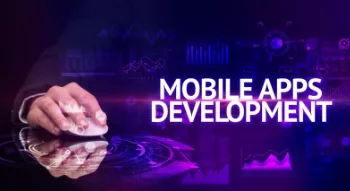According to patch management statistics, 95% of cybersecurity attacks target unpatched vulnerabilities. It takes 106 days to fix an unpatched vulnerability. More than two third (68%) attacks exploit vulnerabilities which have a patch available for more than a year while 56% of businesses have experienced a cyberattack due to missing patch.
Almost two thirds (64%) of cybersecurity professionals think that their business is more vulnerable to cybersecurity attacks because of unpatched vulnerability. That’s not all, 82% of successful cybersecurity attacks use known vulnerabilities for which the patch was already available but not installed. All these statistics clearly show the gaps in patch management.
In a world where cyber threats lurk around every corner, protecting your business’s digital infrastructure is no longer an option—it’s an absolute necessity. Enter patch management, the unsung hero that shields your systems from vulnerabilities and exploits. But with an overwhelming array of patch management solutions vying for your attention, finding the perfect fit for your business can feel like navigating a labyrinth. Fear not!
- Assess Your Requirements:
- Comprehensive Patch Coverage:
- Automation and Centralized Control:
- Patch Testing and Validation:
- Reporting and Compliance:
- Integration and Scalability:
- Vendor Support and Reputation:
1. Assess Your Requirements:
Whether you want to buy VPS hosting or patch management solution for your business, it’s crucial to consider your specific requirements to ensure you make an informed decision.
Here are some key steps to access your business requirements before purchasing a patch management solution:
- Know your IT infrastructure: Assess your existing IT infrastructure thoroughly. Consider the types and number of devices, operating systems, applications, and network architecture your business employs. This evaluation will help you identify any specific compatibility requirements and ensure that the patch management solution can effectively support your environment.
- Consider scalability: Determine the scalability needs of your business. Are you expecting growth in the number of devices or users? If so, you’ll need a patch management solution that can handle your future expansion without major disruptions. Ensure the solution can accommodate your evolving needs over time.
- Assess patch coverage: Evaluate the scope and coverage provided by the patch management solution. Look for solutions that cover critical vulnerabilities and offer comprehensive patching capabilities across your entire IT landscape.
- Understand automation capabilities: Automation plays a crucial role in efficient patch management. Assess the level of automation offered by the solution you are considering. Look for features such as automatic patch detection, deployment, and scheduling.
- Analyze reporting and monitoring capabilities: Reporting and monitoring are essential for tracking patch compliance and identifying potential issues. Evaluate the reporting capabilities of the solution, including customizable reports, real-time dashboards, and alerting mechanisms. Ensure the solution provides comprehensive visibility into the patching process.
- Cost considerations: Understand the pricing structure of the patch management solution. Just like you do with a best cheap dedicated server, consider the total cost of ownership, including licensing fees, maintenance costs, and potential implementation expenses. Compare different vendors to find the best value for your specific requirements.
- Trial and test: Whenever possible, request a trial or a proof-of-concept period to assess the patch management solution firsthand.
2. Comprehensive Patch Coverage:
An effective patch management solution should support a wide range of operating systems, applications, and third-party software commonly used in your organization. Ensure that the solution covers both security patches and software updates. This comprehensive coverage is crucial to address vulnerabilities and keep your systems secure, while also maintaining system stability and performance.
3. Automation and Centralized Control:
Efficiency is key when it comes to managing patches across a large number of endpoints. Look for a solution that offers automation capabilities to streamline the patching process. Automation features may include automatic vulnerability scanning, patch deployment, and scheduling options. Centralized control allows you to manage and monitor patches from a single console, regardless of the number of endpoints or their geographical distribution. This centralized approach saves time and ensures consistency in patch management practices.
4. Patch Testing and Validation:
While it’s essential to apply patches promptly, it’s equally crucial to avoid introducing new vulnerabilities or system instabilities caused by incompatible or faulty patches. A robust patch management solution should include a testing and validation mechanism. This allows you to assess patches’ compatibility with your systems before deployment. The testing phase helps identify any potential conflicts or issues that may arise, enabling you to mitigate risks and minimize disruptions to critical business processes.
5. Reporting and Compliance:
To maintain compliance with regulatory requirements and demonstrate due diligence, it’s important to have efficient tracking and reporting of patching activities. Look for a patch management solution that offers comprehensive reporting capabilities. These may include patch status reports, deployment success rates, vulnerability metrics, and historical data. The solution should provide audit-ready reports for internal assessments and external compliance audits, simplifying the compliance process and helping you stay on top of your security posture.
6. Integration and Scalability:
Consider your organization’s existing IT infrastructure including cheap dedicated server hosting and ensure that the patch management solution can seamlessly integrate with your current systems. Make sure that patch management tool is compatible with network management tools, security information and event management (SIEM) systems, and endpoint protection solutions. Integration ensures that your patch management solution can work harmoniously with other security and IT management tools, enhancing overall effectiveness.
Additionally, assess the solution’s scalability to accommodate your organization’s future growth and evolving patch management needs.
7. Vendor Support and Reputation:
The reputation and support provided by the vendor are important factors to consider. Assess their responsiveness and the quality of their support services. Determine whether they provide documentation, training materials, and user communities that can assist you in utilizing the solution effectively. Additionally, evaluate the frequency of updates and patches released by the vendor, as this demonstrates their commitment to security and addressing emerging vulnerabilities.



